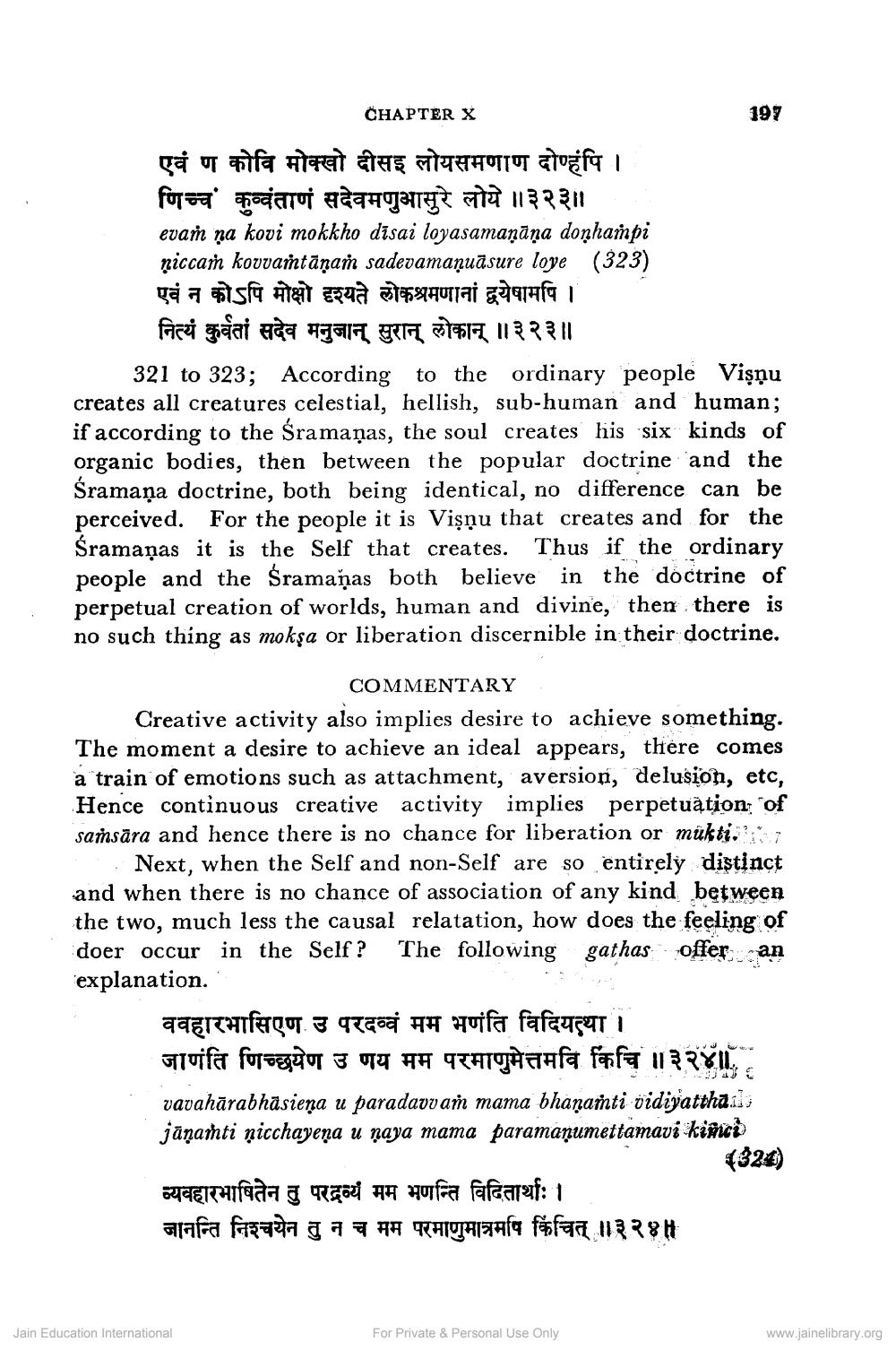________________
CHAPTER X
एवं ण कोवि मोक्खो दीसइ लोयसमणाण दोहंपि । णिच्च कुव्वंताणं सदेवमणुभासुरे लोये ॥ ३२३॥
evam na kovi mokkho disai loyasamaṇāņa doṇhampi niccam kovvamtāņaṁ sadevamaṇuāsure love (323) एवं न कोऽपि मोक्षो दृश्यते लोकश्रमणानां द्वयेषामपि ।
नित्यं कुर्वतां सदेव मनुजान् सुरान् लोकान् ॥ ३२३॥
321 to 323; According to the ordinary people Visņu creates all creatures celestial, hellish, sub-human and human; if according to the Śramaņas, the soul creates his six kinds of organic bodies, then between the popular doctrine and the Śramaņa doctrine, both being identical, no difference can be perceived. For the people it is Vişņu that creates and for the Śramaņas it is the Self that creates. Thus if the ordinary people and the Śramaņas both believe in the doctrine of perpetual creation of worlds, human and divine, then there is no such thing as mokşa or liberation discernible in their doctrine.
COMMENTARY
Creative activity also implies desire to achieve something. The moment a desire to achieve an ideal appears, there comes a train of emotions such as attachment, aversion, delusion, etc, Hence continuous creative activity implies perpetuation of samsara and hence there is no chance for liberation or mükti.
T
Next, when the Self and non-Self are so entirely distinct and when there is no chance of association of any kind between the two, much less the causal relatation, how does the feeling of doer occur in the Self? The following gathas offer an
explanation.
aazıcııfagy. 3 qre ¤¤ noifa fafzuçur i जाणंति णिच्छयेण उणय मम परमाणुमेत्तमवि किचि ॥ ३२४ ॥
197
vavahārabhāsieṇa u paradavvam mama bhanamti vidiyatthal janamti nicchayena u naya mama paramanumettamavi kimci
(324)
व्यवहारभाषितेन तु परद्रव्यं मम भणन्ति विदितार्थाः । नानन्ति निश्चयेन तु न च मम परमाणुमात्रमपि किंचित् ॥ ३२४॥
Jain Education International
For Private & Personal Use Only
www.jainelibrary.org




